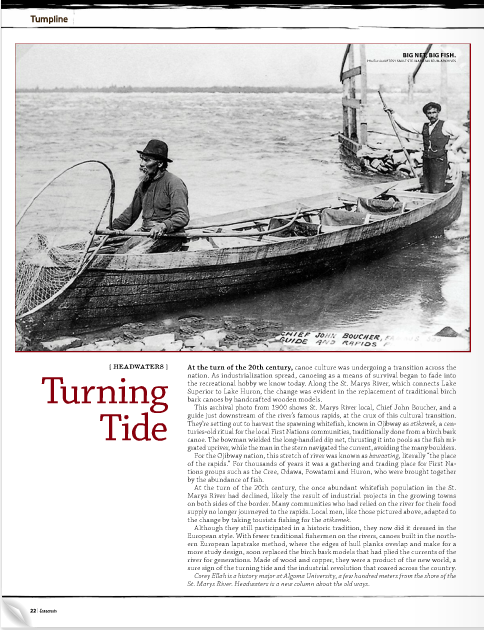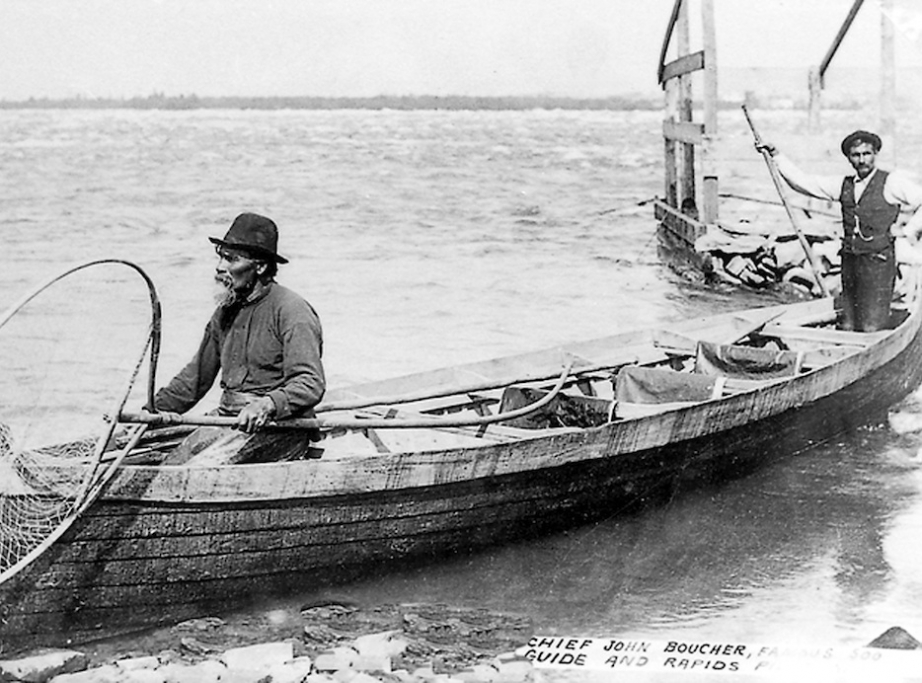At the turn of the 20th century, canoe culture was undergoing a transition across the nation. As industrialization spread, canoeing as a means of survival began to fade into the recreational hobby we know today. Along the St. Marys River, which connects Lake Superior to Lake Huron, the change was evident in the replacement of traditional birch bark canoes by handcrafted wooden models.
This archival photo from 1900 shows St. Marys River local, Chief John Boucher, and a guide just downstream of the river’s famous rapids, at the crux of this cultural transition. They’re setting out to harvest the spawning whitefish, known in Ojibway as atikamek, a centuries-old ritual for the local First Nations communities, traditionally done from a birch bark canoe. The bowman wielded the long-handled dip net, thrusting it into pools as the fish migrated upriver, while the man in the stern navigated the current, avoiding the many boulders.
For the Ojibway nation, this stretch of river was known as bawaating, literally “the place of the rapids.” For thousands of years it was a gathering and trading place for First Nations groups such as the Cree, Odawa, Powatami and Huron, who were brought together by the abundance of fish.
At the turn of the 20th century, the once abundant whitefish population in the St. Marys River had declined, likely the result of industrial projects in the growing towns on both sides of the border. Many communities who had relied on the river for their food supply no longer journeyed to the rapids. Local men, like those pictured above, adapted to the change by taking tourists fishing for the atikamek.
Although they still participated in a historic tradition, they now did it dressed in the European style. With fewer traditional fishermen on the rivers, canoes built in the northern European lapstrake method, where the edges of hull planks overlap and make for a more study design, soon replaced the birch bark models that had plied the currents of the river for generations. Made of wood and copper, they were a product of the new world, a sure sign of the turning tide and the industrial revolution that roared across the country.
Corey Ellah is a history major at Algoma University, a few hundred meters from the shore of the St. Marys River. Headwaters is a new column about the old ways.




